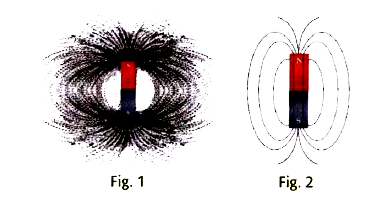According to Newton's law of gravitation each particle attracts every other particle. But we do not see bodies on the surface of the earth moving towards each other. Why?
To understand why we do not see bodies on the surface of the Earth moving towards each other despite Newton's law of gravitation stating that every particle attracts every other particle, we can break down the explanation into a few steps:
1. Understanding Newton's Law of Gravitation:
- According to Newton's law of gravitation, every particle in the universe attracts every other particle with a force that is directly proportional to the product of their masses and inversely proportional to the square of the distance between their centers.
2. Gravitational Force Between Small Objects:
- While it is true that every particle attracts every other particle, the gravitational force between small objects (like two people or two books) is extremely weak compared to the gravitational force exerted by the Earth on these objects.
3. Comparing Forces:
- The gravitational force between two small objects can be calculated using the formula:
F=Gm1m2r2
where F is the gravitational force, G is the gravitational constant, m1 and m2 are the masses of the two objects, and r is the distance between their centers.
- For example, if m1 and m2 are both small compared to the mass of the Earth, the force between them is negligible.
4. Dominant Force of Earth:
- The gravitational force exerted by the Earth on an object is much larger than the gravitational force between two small objects. This is because the mass of the Earth is enormous compared to the masses of everyday objects.
5. Resultant Motion:
- As a result, while the small objects do attract each other, the force is so small that it is overshadowed by the much larger gravitational force pulling them towards the center of the Earth. Thus, we observe objects falling to the ground rather than moving towards each other.
Conclusion:
In summary, we do not see bodies on the surface of the Earth moving towards each other because the gravitational attraction between them is negligible compared to the gravitational attraction they experience from the Earth itself.
---
- According to Newton's law of gravitation, every particle in the universe attracts every other particle with a force that is directly proportional to the product of their masses and inversely proportional to the square of the distance between their centers.
- While it is true that every particle attracts every other particle, the gravitational force between small objects (like two people or two books) is extremely weak compared to the gravitational force exerted by the Earth on these objects.
- The gravitational force between two small objects can be calculated using the formula:
F=Gm1m2r2
where F is the gravitational force, G is the gravitational constant, m1 and m2 are the masses of the two objects, and r is the distance between their centers.
- For example, if m1 and m2 are both small compared to the mass of the Earth, the force between them is negligible.
- The gravitational force exerted by the Earth on an object is much larger than the gravitational force between two small objects. This is because the mass of the Earth is enormous compared to the masses of everyday objects.
- As a result, while the small objects do attract each other, the force is so small that it is overshadowed by the much larger gravitational force pulling them towards the center of the Earth. Thus, we observe objects falling to the ground rather than moving towards each other.
In summary, we do not see bodies on the surface of the Earth moving towards each other because the gravitational attraction between them is negligible compared to the gravitational attraction they experience from the Earth itself.
Topper's Solved these Questions
- GRAVITATIONBOOK - ICSECHAPTER - GRAVITATIONEXERCISE - SELECTED PROBLEMS[FROM NEWTON.S LAW OF GRAVITATION]
4 Videos
- GRAVITATIONBOOK - ICSECHAPTER - GRAVITATIONEXERCISE - SELECTED PROBLEMS[FROM MASS , DENSITY OF EARTH, PLANETS]
9 Videos
- GRAVITATIONBOOK - ICSECHAPTER - GRAVITATIONEXERCISE - SHORT ANSWER QUESTIONS
27 Videos
- FRICTIONBOOK - ICSECHAPTER - FRICTIONEXERCISE - Selected problems
30 Videos
- INTERNAL ENERGY BOOK - ICSECHAPTER - INTERNAL ENERGY EXERCISE - SELECTED PROBLEMS (FROM HEAT ENGINES)
21 Videos
Similar Questions
According to equipartition law of energy each particle in a system of particles have thermal energy E equal to
View Solution
Why do the curved lines around the magnet never intersect each other?
View SolutionWhen air is blown In between two balls suspended close to each other they are attracted towards each other why?
View SolutionWhy do the electric field lines never cross each other ?
View SolutionCan two similarly charged bodies attract each other?
View SolutionTwo parallel wires carrying current in the same direction attract each other while two beams of electrons travelling in the same direction repel each other. Why?
View SolutionTwo parallel wires carrying current in the same direction attract each other while two beams of electrons travelling in the same direction repel each other. Why?
View SolutionAccording to Newton's third law each team pulls the opposite team with equal force in a tug of war. Why then one team wins aned the other loses?
View SolutionSix particles situated at the corners of a regular hexagon of side a move at a constant speed v. Each particle maintains a direction towards the particle at the next corner. Calculate the time the particles will take to meet each other.
View SolutionTwo particles are executing SHM in a straight line. Amplitude A and the time period T of both the particles are equal. At time t=0, one particle is at displacement x1=+A and the other x2=(−A2) and they are approaching towards each other. After what time they across each other? T4
View Solution
